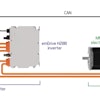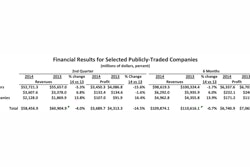
New Flyer Industries Inc., the leading manufacturer of heavy-duty transit buses in the United States and Canada, proudly displayed one of the first few Santa Clara Valley Transportation Authority (VTA) 60-foot Xcelsior buses featuring BAE’s Series-E HybriDrive propulsion system at the American Public Transportation Association (APTA) EXPO in Houston, TX.
With this order, New Flyer adds the BAE Series-E HybriDrive to its available clean propulsion options for the 60-foot New Flyer Xcelsior XDE60. The BAE Series-E HybriDrive is a series diesel-electric hybrid system which provides all electric power directly to the axle, and incorporates a smaller diesel engine. This Xcelsior XDE60 configuration also includes all electric accessories, and offers our customers the following fuel saving and pollution reduction features:
- Start/Stop Drive, which reduces engine idle time by shutting down the diesel engine below 8 mph, and can reduce engine run time by up to 25%.
- Depot Drive, which enables bus operators to enter and exit the bus depot without the engine operating, keeping the depots emission free.
- Quiet Drive, a feature which allows bus operation without the engine at low speeds through noise-sensitive areas.
“We want to give a big thank you to VTA for letting us display their bus at APTA EXPO this week,” says Paul Soubry, President and CEO of New Flyer. “The bus was very well received by our customers and other industry participants.”
The 29 60-foot hybrid buses were awarded to New Flyer in Q3 2013, and support VTA’s commitment to environmental sustainability. The New Flyer XDE60 will provide residents of Santa Clara County with a modern, spacious, and reliable transit vehicle which produces lower greenhouse gas emissions and consumes substantially less fuel than conventional propulsion options.



















